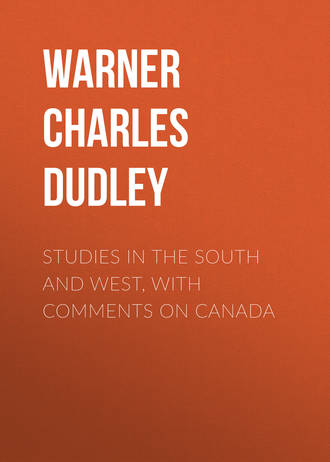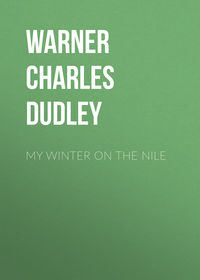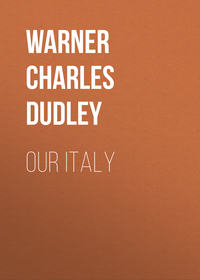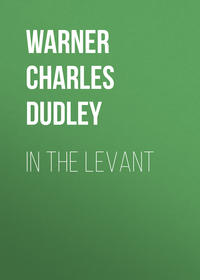 полная версия
полная версияStudies in The South and West, With Comments on Canada
With all its social accomplishments, its love of color, its climatic tendency to the sensuous side of life, the South has been unexpectedly wanting in a fine-art development—namely, in music and pictorial art. Culture of this sort has been slow enough in the North, and only lately has had any solidity or been much diffused. The love of art, and especially of art decoration, was greatly quickened by the Philadelphia Exhibition, and the comparatively recent infusion of German music has begun to elevate the taste. But I imagine that while the South naturally was fond of music of a light sort, and New Orleans could sustain and almost make native the French opera when New York failed entirely to popularize any sort of opera, the musical taste was generally very rudimentary; and the poverty in respect to pictures and engravings was more marked still. In a few great houses were fine paintings, brought over from Europe, and here and there a noble family portrait. But the traveller to-day will go through city after city, and village after village, and find no art-shop (as he may look in vain in large cities for any sort of book-store except a news-room); rarely will see an etching or a fine engraving; and he will be led to doubt if the taste for either existed to any great degree before the war. Of course he will remember that taste and knowledge in the fine arts may be said in the North to be recent acquirements, and that, meantime, the South has been impoverished and struggling in a political and social revolution.
Slavery and isolation and a semi-feudal state have left traces that must long continue to modify social life in the South, and that may not wear out for a century to come. The new life must also differ from that in the North by reason of climate, and on account of the presence of the alien, insouciant colored race. The vast black population, however it may change, and however education may influence it, must remain a powerful determining factor. The body of the slaves, themselves inert, and with no voice in affairs, inevitably influenced life, the character of civilization, manners, even speech itself. With slavery ended, the Southern whites are emancipated, and the influence of the alien race will be other than what it was, but it cannot fail to affect the tone of life in the States where it is a large element.
When, however, we have made all allowance for difference in climate, difference in traditions, total difference in the way of looking at life for a century, it is plain to be seen that a great transformation is taking place in the South, and that Southern society and Northern society are becoming every day more and more alike. I know there are those, and Southerners, too, who insist that we are still two peoples, with more points of difference than of resemblance—certainly farther apart than Gascons and Bretons.
This seems to me not true in general, though it may be of a portion of the passing generation. Of course there is difference in temperament, and peculiarities of speech and manner remain and will continue, as they exist in different portions of the North—the accent of the Bostonian differs from that of the Philadelphian, and the inhabitant of Richmond is known by his speech as neither of New Orleans nor New York. But the influence of economic laws, of common political action, of interest and pride in one country, is stronger than local bias in such an age of intercommunication as this. The great barrier between North and South having been removed, social assimilation must go on. It is true that the small farmer in Vermont, and the small planter in Georgia, and the village life in the two States, will preserve their strong contrasts. But that which, without clearly defining, we call society becomes yearly more and more alike North and South. It is becoming more and more difficult to tell in any summer assembly—at Newport, the White Sulphur, Saratoga, Bar Harbor—by physiognomy, dress, or manner, a person’s birthplace. There are noticeable fewer distinctive traits that enable us to say with certainty that one is from the South, or the West, or the East. No doubt the type at such a Southern resort as the White Sulphur is more distinctly American than at such a Northern resort as Saratoga. We are prone to make a good deal of local peculiarities, but when we look at the matter broadly and consider the vastness of our territory and the varieties of climate, it is marvellous that there is so little difference in speech, manner, and appearance. Contrast us with Europe and its various irreconcilable races occupying less territory. Even little England offers greater variety than the United States. When we think of our large, widely scattered population, the wonder is that we do not differ more.
Southern society has always had a certain prestige in the North. One reason for this was the fact that the ruling class South had more leisure for social life. Climate, also, had much to do in softening manners, making the temperament ardent, and at the same time producing that leisurely movement which is essential to a polished life. It is probably true, also, that mere wealth was less a passport to social distinction than at the North, or than it has become at the North; that is to say, family, or a certain charm of breeding, or the talent of being agreeable, or the gift of cleverness, or of beauty, were necessary, and money was not. In this respect it seems to be true that social life is changing at the South; that is to say, money is getting to have the social power in New Orleans that it has in New York. It is inevitable in a commercial and industrial community that money should have a controlling power, as it is regrettable that the enjoyment of its power very slowly admits a sense of its responsibility. The old traditions of the South having been broken down, and nearly all attention being turned to the necessity of making money, it must follow that mere wealth will rise as a social factor. Herein lies one danger to what was best in the old régime. Another danger is that it must be put to the test of the ideas, the agitations, the elements of doubt and disintegration that seem inseparable to “progress,” which give Northern society its present complexity, and just cause of alarm to all who watch its headlong career. Fulness of life is accepted as desirable, but it has its dangers.
Within the past five years social intercourse between North and South has been greatly increased. Northerners who felt strongly about the Union and about slavery, and took up the cause of the freedman, and were accustomed all their lives to absolute free speech, were not comfortable in the post-reconstruction atmosphere. Perhaps they expected too much of human nature—a too sudden subsidence of suspicion and resentment. They felt that they were not welcome socially, however much their capital and business energy were desired. On the other hand, most Southerners were too poor to travel in the North, as they did formerly. But all these points have been turned. Social intercourse and travel are renewed. If difficulties and alienations remain they are sporadic, and melting away. The harshness of the Northern winter climate has turned a stream of travel and occupation to the Gulf States, and particularly to Florida, which is indeed now scarcely a Southern State except in climate. The Atlanta and New Orleans Exhibitions did much to bring people of all sections together socially. With returning financial prosperity all the Northern summer resorts have seen increasing numbers of Southern people seeking health and pleasure. I believe that during the past summer more Southerners have been travelling and visiting in the North than ever before.
This social intermingling is significant in itself, and of the utmost importance for the removal of lingering misunderstandings. They who learn to like each other personally will be tolerant in political differences, and helpful and unsuspicious in the very grave problems that rest upon the late slave States. Differences of opinion and different interests will exist, but surely love is stronger than hate, and sympathy and kindness are better solvents than alienation and criticism. The play of social forces is very powerful in such a republic as ours, and there is certainly reason to believe that they will be exerted now in behalf of that cordial appreciation of what is good and that toleration of traditional differences which are necessary to a people indissolubly bound together in one national destiny. Alienated for a century, the society of the North and the society of the South have something to forget but more to gain in the union that every day becomes closer.
III.—NEW ORLEANS
The first time I saw New Orleans was on a Sunday morning in the month of March. We alighted from the train at the foot of Esplanade Street, and walked along through the French Market, and by Jackson Square to the Hotel Royal. The morning, after rain, was charming; there was a fresh breeze from the river; the foliage was a tender green; in the balconies and on the mouldering window-ledges flowers bloomed, and in the decaying courts climbing-roses mingled their perfume with the orange; the shops were open; ladies tripped along from early mass or to early market; there was a twittering in the square and in the sweet old gardens; caged birds sang and screamed the songs of South America and the tropics; the language heard on all sides was French or the degraded jargon which the easy-going African has manufactured out of the tongue of Bienville. Nothing could be more shabby than the streets, ill-paved, with undulating sidewalks and open gutters green with slime, and both stealing and giving odor; little canals in which the cat, become the companion of the crawfish, and the vegetable in decay sought in vain a current to oblivion; the streets with rows of one-story houses, wooden, with green doors and batten window-shutters, or brick, with the painted stucco peeling off, the line broken often by an edifice of two stories, with galleries and delicate tracery of wrought-iron, houses pink and yellow and brown and gray—colors all blending and harmonious when we get a long vista of them and lose the details of view in the broad artistic effect. Nothing could be shabbier than the streets, unless it is the tumble-down, picturesque old market, bright with flowers and vegetables and many-hued fish, and enlivened by the genial African, who in the New World experiments in all colors, from coal black to the pale pink of the sea-shell, to find one that suits his mobile nature. I liked it all from the first; I lingered long in that morning walk, liking it more and more, in spite of its shabbiness, but utterly unable to say then or ever since wherein its charm lies. I suppose we are all wrongly made up and have a fallen nature; else why is it that while the most thrifty and neat and orderly city only wins our approval, and perhaps gratifies us intellectually, such a thriftless, battered and stained, and lazy old place as the French quarter of New Orleans takes our hearts?
I never could find out exactly where New Orleans is. I have looked for it on the map without much enlightenment. It is dropped down there somewhere in the marshes of the Mississippi and the bayous and lakes. It is below the one, and tangled up among the others, or it might some day float out to the Gulf and disappear. How the Mississippi gets out I never could discover. When it first comes in sight of the town it is running east; at Carrollton it abruptly turns its rapid, broad, yellow flood and runs south, turns presently eastward, circles a great portion of the city, then makes a bold push for the north in order to avoid Algiers and reach the foot of Canal Street, and encountering there the heart of the town, it sheers off again along the old French quarter and Jackson Square due east, and goes no one knows where, except perhaps Mr. Eads.
The city is supposed to lie in this bend of the river, but it in fact extends eastward along the bank down to the Barracks, and spreads backward towards Lake Pontchartrain over a vast area, and includes some very good snipe-shooting.
Although New Orleans has only about a quarter of a million of inhabitants, and so many only in the winter, it is larger than Pekin, and I believe than Philadelphia, having an area of about one hundred and five square miles. From Carrollton to the Barracks, which are not far from the Battle-field, the distance by the river is some thirteen miles. From the river to the lake the least distance is four miles. This vast territory is traversed by lines of horse-cars which all meet in Canal Street, the most important business thoroughfare of the city, which runs north-east from the river, and divides the French from the American quarter. One taking a horse-car in any part of the city will ultimately land, having boxed the compass, in Canal Street. But it needs a person of vast local erudition to tell in what part of the city, or in what section of the home of the frog and crawfish, he will land if he takes a horse-ear in Canal Street. The river being higher than the city, there is of course no drainage into it; but there is a theory that the water in the open gutters does move, and that it moves in the direction of the Bayou St. John, and of the cypress swamps that drain into Lake Pontchartrain. The stranger who is accustomed to closed sewers, and to get his malaria and typhoid through pipes conducted into his house by the most approved methods of plumbing, is aghast at this spectacle of slime and filth in the streets, and wonders why the city is not in perennial epidemic; but the sun and the wind are great scavengers, and the city is not nearly so unhealthy as it ought to be with such a city government as they say it endures.
It is not necessary to dwell much upon the external features of New Orleans, for innumerable descriptions and pictures have familiarized the public with them. Besides, descriptions can give the stranger little idea of the peculiar city. Although all on one level, it is a town of contrasts. In no other city of the United States or of Mexico is the old and romantic preserved in such integrity and brought into such sharp contrast to the modern. There are many handsome public buildings, churches, club-houses, elegant shops, and on the American side a great area of well-paved streets solidly built up in business blocks. The Square of the original city, included between the river and canal, Rampart and Esplanade streets, which was once surrounded by a wall, is as closely built, but the streets are narrow, the houses generally are smaller, and although it swarms with people, and contains the cathedral, the old Spanish buildings, Jackson Square, the French Market, the French Opera-house, and other theatres, the Mint, the Custom-house, the old Ursuline convent (now the residence of the archbishop), old banks, and scores of houses of historic celebrity, it is a city of the past, and specially interesting in its picturesque decay. Beyond this, eastward and northward extend interminable streets of small houses, with now and then a flowery court or a pretty rose garden, occupied mainly by people of French and Spanish descent. The African pervades all parts of the town, except the new residence portion of the American quarter. This, which occupies the vast area in the bend of the river west of the business blocks as far as Carrollton, is in character a great village rather than a city. Not all its broad avenues and handsome streets are paved (and those that are not are in some seasons impassable), its houses are nearly all of wood, most of them detached, with plots of ground and gardens, and as the quarter is very well shaded, the effect is bright and agreeable. In it are many stately residences, occupying a square or half a square, and embowered in foliage and flowers. Care has been given lately to turf-culture, and one sees here thick-set and handsome lawns. The broad Esplanade Street, with its elegant old-fashioned houses, and double rows of shade trees, which has long been the rural pride of the French quarter, has now rivals in respectability and style on the American side.
New Orleans is said to be delightful in the late fall months, before the winter rains set in, but I believe it looks its best in March and April. This is owing to the roses. If the town was not attached to the name of the Crescent City, it might very well adopt the title of the City of Roses. So kind are climate and soil that the magnificent varieties of this queen of flowers, which at the North bloom only in hot-houses, or with great care are planted out-doors in the heat of our summer, thrive here in the open air in prodigal abundance and beauty. In April the town is literally embowered in them; they fill door-yards and gardens, they overrun the porches, they climb the sides of the houses, they spread over the trees, they take possession of trellises and fences and walls, perfuming the air and entrancing the heart with color. In the outlying parks, like that of the Jockey Club, and the florists’ gardens at Carrollton, there are fields of them, acres of the finest sorts waving in the spring wind. Alas! can beauty ever satisfy? This wonderful spectacle fills one with I know not what exquisite longing. These flowers pervade the town, old women on the street corners sit behind banks of them, the florists’ windows blush with them, friends despatch to each other great baskets of them, the favorites at the theatre and the amateur performers stand behind high barricades of roses which the good-humored audience piles upon the stage, everybody carries roses and wears roses, and the houses overflow with them. In this passion for flowers you may read a prominent trait of the people. For myself I like to see a spot on this earth where beauty is enjoyed for itself and let to run to waste, but if ever the industrial spirit of the French-Italians should prevail along the littoral of Louisiana and Mississippi, the raising of flowers for the manufacture of perfumes would become a most profitable industry.
New Orleans is the most cosmopolitan of provincial cities. Its comparative isolation has secured the development of provincial traits and manners, has preserved the individuality of the many races that give it color, morals, and character, while its close relations with France—an affiliation and sympathy which the late war has not altogether broken—and the constant influx of Northern men of business and affairs have given it the air of a metropolis. To the Northern stranger the aspect and the manners of the city are foreign, but if he remains long enough he is sure to yield to its fascinations, and become a partisan of it. It is not altogether the soft and somewhat enervating and occasionally treacherous climate that beguiles him, but quite as much the easy terms on which life can be lived. There is a human as well as a climatic amiability that wins him. No doubt it is better for a man to be always braced up, but no doubt also there is an attraction in a complaisance that indulges his inclinations.
Socially as well as commercially New Orleans is in a transitive state. The change from river to railway transportation has made her levees vacant; the shipment of cotton by rail and its direct transfer to ocean carriage have nearly destroyed a large middle-men industry; a large part of the agricultural tribute of the South-west has been diverted; plantations have either not recovered from the effects of the war or have not adjusted themselves to new productions, and the city waits the rather blind developments of the new era. The falling off of law business, which I should like to attribute to the growth of common-sense and good-will is, I fear, rather due to business lassitude, for it is observed that men quarrel most when they are most actively engaged in acquiring each other’s property. The business habits of the Creoles were conservative and slow; they do not readily accept new ways, and in this transition time the American element is taking the lead in all enterprises. The American element itself is toned down by the climate and the contagion of the leisurely habits of the Creoles, and loses something of the sharpness and excitability exhibited by business men in all Northern cities, but it is certainly changing the social as well as the business aspect of the city. Whether these social changes will make New Orleans a more agreeable place of residence remains to be seen.
For the old civilization had many admirable qualities. With all its love of money and luxury and an easy life, it was comparatively simple. It cared less for display than the society that is supplanting it. Its rule was domesticity. I should say that it bad the virtues as well as the prejudices and the narrowness of intense family feeling, and its exclusiveness. But when it trusted, it had few reserves, and its cordiality was equal to its naivete. The Creole civilization differed totally from that in any Northern city; it looked at life, literature, wit, manners, from altogether another plane; in order to understand the society of New Orleans one needs to imagine what French society would be in a genial climate and in the freedom of a new country. Undeniably, until recently, the Creoles gave the tone to New Orleans. And it was the French culture, the French view of life, that was diffused. The young ladies mainly were educated in convents and French schools. This education had womanly agreeability and matrimony in view, and the graces of social life. It differed not much from the education of young ladies of the period elsewhere, except that it was from the French rather than the English side, but this made a world of difference. French was a study and a possession, not a fashionable accomplishment. The Creole had gayety, sentiment, spice with a certain climatic languor, sweetness of disposition, and charm of manner, and not seldom winning beauty; she was passionately fond of dancing and of music, and occasionally an adept in the latter; and she had candor, and either simplicity or the art of it. But with her tendency to domesticity and her capacity for friendship, and notwithstanding her gay temperament, she was less worldly than some of her sisters who were more gravely educated after the English manner. There was therefore in the old New Orleans life something nobler than the spirit of plutocracy. The Creole middle-class population had, and has yet, captivating naivete, friendliness, cordiality.
But the Creole influence in New Orleans is wider and deeper than this. It has affected literary sympathies and what may be called literary morals. In business the Creole is accused of being slow, conservative, in regard to improvements obstinate and reactionary, preferring to nurse a prejudice rather than run the risk of removing it by improving himself, and of having a conceit that his way of looking at life is better than the Boston way. His literary culture is derived from France, and not from England or the North. And his ideas a good deal affect the attitude of New Orleans towards English and contemporary literature. The American element of the town was for the most part commercial, and little given to literary tastes. That also is changing, but I fancy it is still true that the most solid culture is with the Creoles, and it has not been appreciated because it is French, and because its point of view for literary criticism is quite different from that prevailing elsewhere in America. It brings our American and English contemporary authors, for instance, to comparison, not with each other, but with French and other Continental writers. And this point of view considerably affects the New Orleans opinion of Northern literature. In this view it wants color, passion; it is too self-conscious and prudish, not to say Puritanically mock-modest. I do not mean to say that the Creoles as a class are a reading people, but the literary standards of their scholars and of those among them who do cultivate literature deeply are different from those at the North. We may call it provincial, or we may call it cosmopolitan, but we shall not understand New Orleans until we get its point of view of both life and letters.
In making these observations it will occur to the reader that they are of necessity superficial, and not entitled to be regarded as criticism or judgment. But I am impressed with the foreignness of New Orleans civilization, and whether its point of view is right or wrong, I am very far from wishing it to change. It contains a valuable element of variety for the republic. We tend everywhere to sameness and monotony. New Orleans is entering upon a new era of development, especially in educational life. The Tonlane University is beginning to make itself felt as a force both in polite letters and in industrial education. And I sincerely hope that the literary development of the city and of the South-west will be in the line of its own traditions, and that it will not be a copy of New England or of Dutch Manhattan. It can, if it is faithful to its own sympathies and temperament, make an original and valuable contribution to our literary life.





